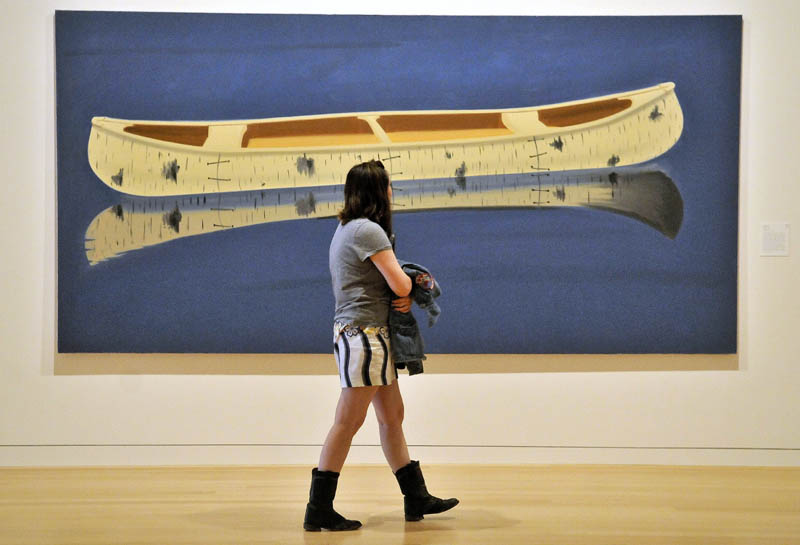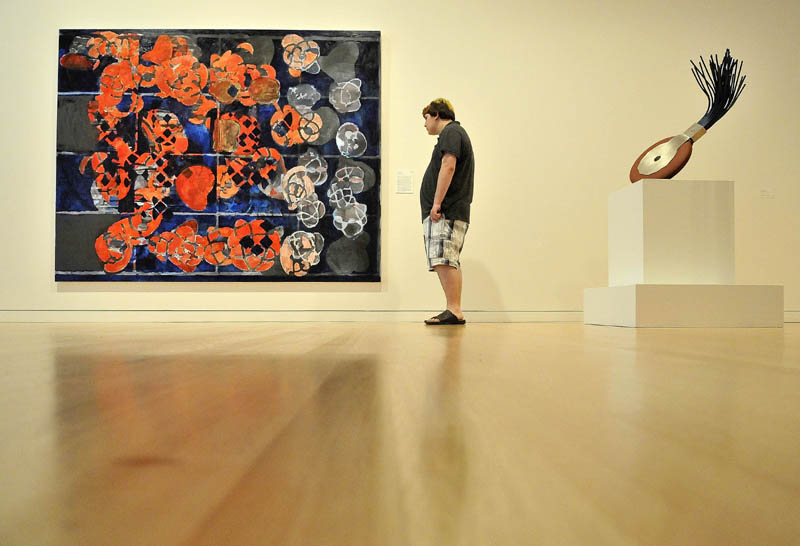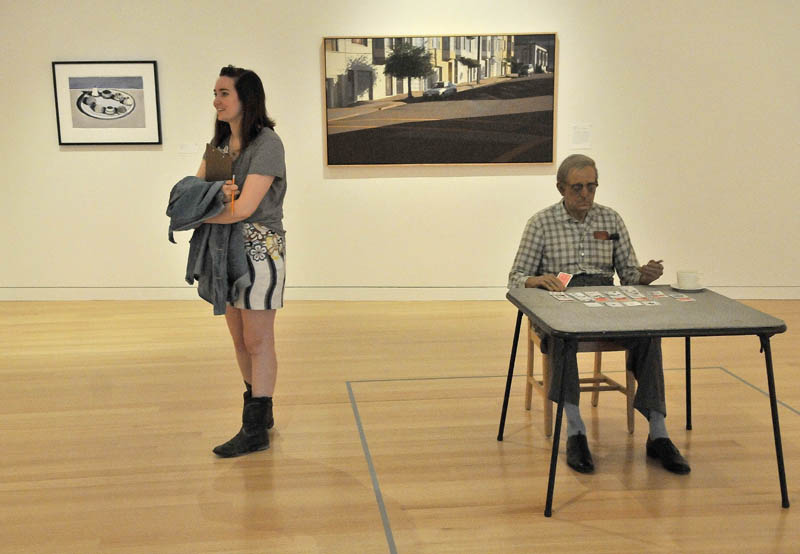WATERVILLE — Every time a student enters the doors of the Colby College Museum of Art, which reopens to the public Saturday, it represents a challenge to the museum’s curators.
The college has a mission, not just to maintain its art collection for enthusiasts and faculty, but to encourage use among all of Maine’s people, even those who are unlikely to think of a museum outing as a good way to spend an afternoon.
When a young person visits, the museum is challenged to spark an interest, perhaps lifelong, in art.
Today, a small group of students entered the lobby to see staff members wheeling carts of flowers over the gleaming floor, making final preparations for the opening. Members of the public will start to visit Saturday, but they expect the real crowds to appear Sunday, when free food, music and tours will be offered as part of a community day celebration.
Curator Hannah Blunt smiled at the students as they arrived and told them they were about to see the new wing at its very best, before its floors were crossed by the crowds.
Above her was an artistic installation of lettering, consistent with the museum’s mission.
“The artist learns to communicate,” it says. “The public learns to make connections.”
The curators have spent countless hours trying to display the nearly 500 pieces of art in such a way that people can make connections between them and their own lives.
If the students make such connections, it will be an indicator of success. Indifference could mean the long hours have been ineffective.
At first glance, the students, who walked quietly among the museum’s displays, seemed like they might be tough sells. They spoke rarely, in hushed voices, and had no questions for the curator.
The teens came from the Maine Academy of Natural Sciences, a charter school at Good Will-Hinckley in nearby Fairfield that relies on a blend of agriculture-based learning and individual attention to teach children who have not done well in a more traditional classroom setting.
Blair Hudson, 18, of Columbia Falls, who wore a small hoop through her pierced nose, will graduate from the charter school in August and go on to college. A vegetarian since age 11, she tries hard to live a life that is consistent with her moral compass.
Hudson, who has artistic aspirations, was wary of the money and power evident in the $15-million addition of the museum. She said art should not be valued in dollars and cents.
Neil Lockwood, a 15-year-old from Stetson, lacked Hudson’s easy confidence, and spoke in sometimes halting sentences. Lockwood, who was home-schooled for many years by his mother, said even the relatively small classes in the charter school were a culture shock, because he was used to spending all of his time at home.
He had never been in a museum before in his life.
Blunt led them into a room marked by white walls and high ceilings divided into three sections, each with a dozen or so pieces on display.
The museum layout was designed to bring them back in time, she told them. This room, the most modern, contains pieces made in the last 70 years or so.
Lockwood is drawn to a piece called “Pin River,” hundreds of metal pins stuck into the wall. Collectively, they are in the shape of the Kissimmee River in Florida as seen in a topographic map.
The tour continues farther back in time. The individual rooms are larger, or smaller, brighter or dimly lit, painted purple, or blue, or yellow.
Hudson recognized a piece from an artist she is familiar with, and she offered an interpretation of the artist’s work. Standing in front of one painting, the students debated the demeanor of the subject: a stocky boy wearing a heavy work apron who looks at the viewer as he takes the first bite from an apple.
Hudson thought the boy in the painting is annoyed, probably has been disturbed after trying to find a quiet space during a well-deserved break from work.
Lockwood saw something more sinister in his expression. He points to bulges beneath the apron that indicate the presence of other apples, hidden from view.
“I think he stole them,” he said.
The students’ engagement is good news for the curators, who are trying to live up to the beliefs of the museum’s most generous benefactors, said Lauren Lessing, the museum’s Mirken curator of education.
The benefactors, including philanthropists like the Alfond and Lunder families for whom the new Alfond-Lunder Family Pavilion is named, “are people who have deep connections in Waterville and in central Maine,” Lessing said. “They are committed to the college, but they are just as committed to giving this artwork to the people of Maine.”
The mission, which Lessing said is also deeply felt by the staff, has led the museum to constantly search for more ways to bring people in the door.
Every year, between 3,000 and 4,000 students come in groups from schools around the state, to tour and participate in art-related lessons and activities.
The college also partners with teachers to try to incorporate the offerings into lesson plans, not only for art classes, but for science, literature, and math.
In the coming months, Lessing said the curators hope to do even more, inviting student classes to visit more frequently. Sunday’s community day is the first of a series of family days that the museum hopes to hold four times a year, with food and music to help draw in visitors.
The biggest challenge, Lessing said, is not to get children to appreciate art with the sophistication, pretension and experience of their elders. Instead, it’s to convince each adult to open up, put aside rigid expectations of what art is, or what art is not. She said they should look at each piece in the gallery with the eyes of a child.
Matt Hongoltz-Hetling — 861-9287
mhhetling@centralmaine.com
Send questions/comments to the editors.





Success. Please wait for the page to reload. If the page does not reload within 5 seconds, please refresh the page.
Enter your email and password to access comments.
Hi, to comment on stories you must . This profile is in addition to your subscription and website login.
Already have a commenting profile? .
Invalid username/password.
Please check your email to confirm and complete your registration.
Only subscribers are eligible to post comments. Please subscribe or login first for digital access. Here’s why.
Use the form below to reset your password. When you've submitted your account email, we will send an email with a reset code.